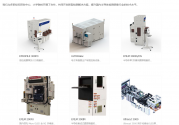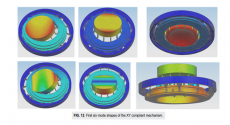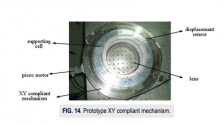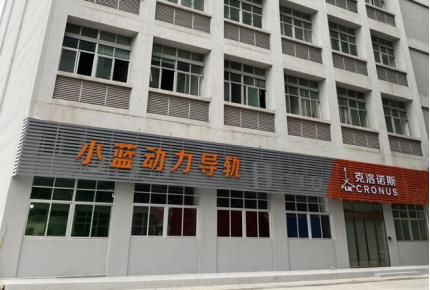@mossen bro I'll repost an article from Semiconductor Engineering by Mark Lapedus on EUVL, hope
@hvpc @latenlazy @tokenanalyst @FairAndUnbiased @krautmeister @PopularScience and other experts can expound on this.
@ansy1968, Some of these experts response do not really address the question asked, which I thought is about transition from single to multiple patterning in EUVL and subsequently to HiNA EUVL. I'll take a stab at translating what these "experts" said.
What’s Next In Fab Tool Technologies?
594Shares
36
46
504
MAY 12TH, 2021 - BY:
Experts at the Table: Semiconductor Engineering sat down to discuss extreme ultraviolet (EUV) lithography and other next-generation fab technologies with Jerry Chen, head of global business development for manufacturing & industrials at Nvidia; David Fried, vice president of computational products at Lam Research; Mark Shirey, vice president of marketing and applications at KLA; and Aki Fujimura, CEO of D2S. What follows are excerpts of that conversation. To view part one of this discussion, click . Part two is .
SE: EUV lithography is in production at the 7nm and 5nm logic nodes. We’ve heard some chipmakers are moving from EUV single patterning to EUV double patterning at 5nm and beyond. From there, we’re expecting to see high-NA EUV, which is in R&D. What are you seeing from your vantage point here?
Fried: If EUV had been deployed on its originally-slated schedule several years earlier, it would have been used as a single patterning scaling replacement and as a stepwise progression from 193nm immersion lithography. Unfortunately, it took longer than expected to get EUV established. This created a continuing need for multiple patterning with 193nm immersion, which includes self-aligned double patterning and self-aligned quad patterning. I worked on some early double-patterning initiatives using a 90nm reticle about 20 years ago, when self-aligned double patterning wasn’t truly viable. At the time, these efforts used a little trick that we played in the lab. Due to EUV taking so long to come to fruition, we built a much more robust version of double-patterning and quad-patterning to fill the void left by the lack of commercial EUV capabilities. EUV is now finally available, but it has come at a time when it can’t just be used as a single-patterning replacement. In several applications, EUV will most likely be deployed as the litho replacement during the litho step in double patterning. EUV still provides a huge advantage, since it will eliminate significant process time and complexity. Usually, these types of lithography scaling changes come with material challenges. I lived through the 248nm to 193nm lithography transition, and it was a difficult transition because many of the materials weren’t fully ready for manufacturing criteria. The equipment at the time was ahead of the materials. With EUV, it’s a little bit different. The equipment took so long to arrive and due to the extremely short wavelength, EUV introduced several unique material challenges. In addition, any stepwise progression in the fab has ripple effects into every other aspect of the fab. However, I believe there are adequate levels of innovation in all semiconductor fabrication sectors to support the progression to EUV along with the next big stepwise progressions.
A lot said here. Addressing the last few comments. 193nm to EUV is indeed a revolutionary change compared to 248nm to 193nm to immersion. Introduction of EUV created problems for the photomasks industry that it had to come up with new mask blanks, new ways to make, measure, inspect. Pellicles used to keep the photomask clean has to be completely re-engineered. It's so difficult, I think only a few mask operations in the world have the capability to support EUV reticle manufacturing.
Going to HiNA EUV will bring about yet another challenge from the anamorphic nature of HiNA EUVL. More on this further down this thread.
Shirey: There is a tremendous amount of work being done across these generations of EUV. Starting with EUV reticles, there are inspection strategies being developed and deployed from initial qualification in the mask house to reticle re-qualification in the fab. As we try to squeeze more out of the current EUV systems, there is continuous development with resists and increases in source power that drive inspection and metrology characterization projects. There is ongoing work to optimize litho and etch inspection steps for EUV defects like stochastic defects in development and high-volume manufacturing.
Shirley is referring to reticle and wafer inspection in general here. EUV reticle inspection is completely different from before. Transmission mode inspection is the norm for non-EUV reticle inspection. EUV reticle inspection relies on Reflective mode. The current EUV reticle inspection leaves much to be desired at the moment and KLA is supposedly working hard to close that gap.
The latter part about stochastic wafer defects refers to general overall effort by KLA to improve the inspection performance where defect of interests are captured without capturing unwanted nuisance false defects.
Fujimura: High-NA is a clever invention. But the mask infrastructure needs to be shared between 193i and EUV, including high-NA. So in order for high-NA to be viable and attain a higher-numerical aperture, high-NA EUV uses 8:1 ratio of mask sizes to wafer sizes in one dimension while retaining the traditional 4:1 ratio in the other dimension. While EUV masks are substantially different in being reflective masks, mask sizes are the same for both. High-NA allows you to preserve that by deciding to split what used to be a full reticle design into two reticles. Each feature on a mask now reflects twice as much EUV energy off the reticle, improving the ability to write smaller features more precisely and reliably. Of course, 8:1 in both dimensions would be even higher NA. But that would either reduce the throughput of wafer manufacturing by 4X instead of just 2X. Or, it requires an entirely new mask infrastructure that handles much bigger masks, while also continuing to support the traditional sizes. High-NA will bring about opportunities to improve software processing infrastructure like inverse lithography technology (ILT) for wafer lithography and mask process correction (MPC) for mask writing.
Fumimura is talking about the impact from the anamorphic reduction lens of HiNA EUV. Previously the reduction is isomorphic, 4x in both x & y direction. In this case, a defect of the same size (round defect) would be transferred onto the wafer, in theory, the same in both x & y direction or have same printability. For anamorphic case, the same circle defect, will transfer to the wafer in an elliptical shape. Now, this would require the reticle inspection of these HiNA reticles to treat a defect of same size differently. The reticle inspection algorithm would have to figure out what will print what won't print based on the spatial orientation size.
I don't think people have figured out yet on how to quantify the printability of defects for HiNA reticles.











